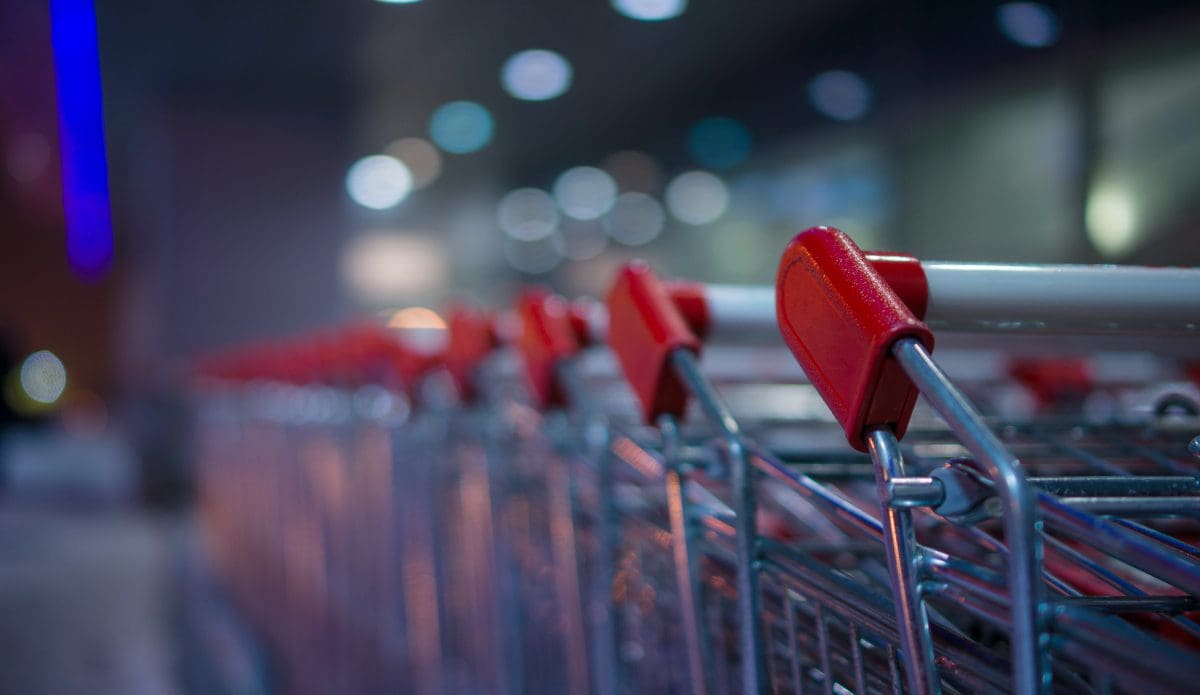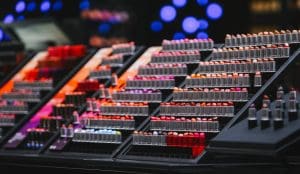If you want to amp up your sales, you need to perfect your in-store retail displays. Done well, you can increase sales by up to 32%.
Retail displays are about getting a product in front of a customer. Having a well thought out visual merchandising strategy with a variety of different promotions can increase customer awareness and improve sales as a result.
There are many different types of retail displays. Which one you choose depends on the product, and the physical limitations in-store.
Standalone POP Displays
These point-of-purchase (POP) displays are essentially anything that is separate from aisles and shelves. They could be in any open space, or even aisle ends. Often, these temporary displays give consumers the impression that a product is great value, making them ideal to increase impulse purchases.
Dump Bins
These are large standalone bins where products are ‘dumped’. Ideal for stock that the store wants to stop stocking, odds-and-end items (some customers do love digging through things and finding bargains), consumables close to best-before date, or impulse buy toys or sweets.
These dump bins are typically wire or timber, and can be wrapped in branding if required. They can be an island or tucked at the end of an aisle.
Freestanding Displays
These standalone displays are designed for a specific product. For instance, showcasing a brand of haircare products, or a range of canned soups. They can be a permanent wire shelving unit, or a temporary corflute or cardboard for a specific advertising campaign.
They are highly organised, display the product optimally, and highly branded. Because they can be made from corflute or cardboard, they are highly customisable, and give lots of leeway for experimentation.
Entry Displays
These are ideal if you want a customer to see your product before they get to the competition. They are also incredibly effective for impulse purchases, with products finding their way into the customer basket when they are ready to spend money.
Gondola Displays
These stand-alone, two sided shelving units are typically found as islands in open areas of stores. They are generally made from permanent materials, are unbranded, and are made with adjustable peg boards or shelves. These can be branded if required.
Display Cases
These are the cases you’ll typically see in a jewellery shops with clear plastic closed in on all sides. A great place for high-value items that are small enough to find their way into a pocket. These more luxurious types of permanent displays make the value of the goods seem higher, so a customer could be willing to spend more.
These can also be a great way to create a display in the case, while providing the item itself on top.
Banner Stands
These are commonly found at trade shows or conventions where the organisation unrolls their banner to display a product or announce a promotion. They are inexpensive, mobile, and very easy to fit in with branding. In store, these could be located next to the product in question, perhaps answering questions about the product or how to use it.
Retail Shelving Display Options
These are displays which sit on a store shelf. They utilise the existing space to showcase a product or brand and disrupt the shopper’s journey to grab attention.
End Cap Displays
These are the shelves at the end of a dual sided retail shelf. They offer space to place a product or brand to highlight them. Because they are at the end of an aisle, even shoppers who don’t walk down that aisle will see the display, making them more valuable than in-aisle displays.
Shelf Talkers
These small hang tags are sometimes called ‘wobblers’ as they move around in the breeze. They are attached to the shelf and hang off at the front, disrupting the shopper’s gaze. Easily brandable, use of bright colours can make these stand out.
It’s also interesting to note that customers find horizontal displays easier to process. Because in Western countries, we read left to right, our eyes naturally do that in stores too.
Clip Strips
These hang on the shelving verticals, making optimal use of space. These clip strips are great for hanging small items, or for allowing complementary items to be placed next to something, such as onion soup mix next to the reduced cream.
Best Display Practices in a Retail Environment
- Change things every month or so. Keeping displays rotated and fresh keep customers interested
- Make sure everything has a clearly marked price. Shoppers don’t want to ask, and they don’t want to be surprised
- Don’t be afraid to experiment with display props, or putting things together you wouldn’t typically see. In a wool shop, a display of soup bowls alongside beautiful jersey knitting wool, for instance
- Expensive displays aren’t always the most effective. Simple displays can really help to increase sales
- Think of the opportunity cost. A marketing campaign that increases sales makes the ROI totally worth it.
At Mills Display, we have a large selection of retail display options. Check out our website or give us a call to chat about the options. We offer custom items too, if you have something special in mind.




